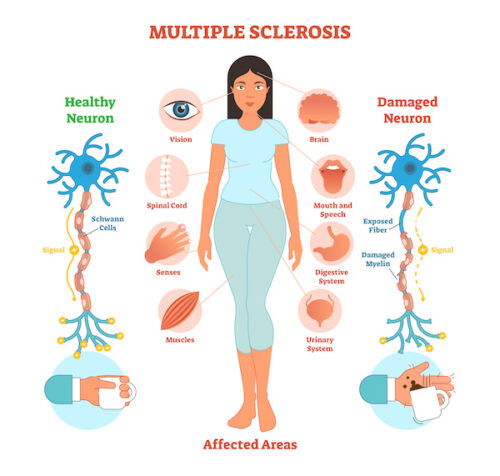Diabetes (Adult Onset and Juvenile)
Both forms of diabetes, childhood and adult, are rare in parts of the world where people’s meals are based on starches. This rarity is easy to understand as far as adult-type diabetes is concerned, since the primary cause of that illness is the rich Western diet. Fat inhibits action of the body’s insulin, and the lack of fibers allows rapid passage of glucose from the gut into the blood at which point the blood sugar content rises rapidly. Carbohydrates surprisingly stimulate insulin activity, thereby lowering blood sugar levels, and making the diabetic feel better.
For cases of childhood diabetes the explanation is cow’s milk consumption. Cow’s milk protein fed to young children causes an autoimmune reaction that causes the body to direct antibodies to the child’s pancreas.
Many of the complications that occur in both forms of the disease are the consequences of a rich diet burdening a weakened system. A diabetic person cannot defend himself from the harmful American diet or repair the damages it causes as well as can someone who does not have diabetes. Consider how a small infection in a diabetic’s toe can soon extend to the point where amputation of the foot or of the leg will be necessary. The various manifestations of atherosclerosis can progress much more rapidly in a diabetic. Even mild variations in blood sugar-control are associated with an increased rate of heart attacks in Americans.
Atherosclerosis is remarkably uncommon in the few cases of diabetes found in counties in Africa and Asia where the diet is largely starch-based. These few diabetics live almost free of heart disease, strokes, and gangrene which are too common among diabetics indulging in the unending American feast.
In Childhood Diabetes: These patients will usually drop their insulin needs by 30%, and their blood sugar levels will be more stable (less “brittle”) on a starch-based diet. Most important, their risk of complications is markedly decreased with a low-fat, low-cholesterol diet. Insulin adjustments are made as usual, with the aid of urine-sugar, and blood sugar tests, under a doctor’s supervision.
In Adult Diabetes: Change in diet will allow 75% of these patients to stop taking all insulin, and more than 95% to stop taking all diabetic pills. (The few who continue to need medication should be treated with small doses of insulin.) Insulin adjustments are made as usual, with the aid of urine-sugar and blood-sugar tests, under a doctor’s supervision.
Related Videos
+-Recommendations
+-Never take oral hypoglycemic drugs, because they increase your chances of dying sooner. Change to a low-fat, high-complex carbohydrate diet (starches, vegetables, and about 3 fruits a day). If you’re obese, lose weight, for added health and blood sugar-control. You should also be physically active. Exercise, in addition to helping you lose weight, has independent benefits that increase the activity of insulin and improves your diabetic condition.
Childhood-type diabetics will continue to need insulin! If a childhood diabetic stopped all insulin they would likely develop ketoacidosis, slip into a coma and soon die. Insulin in this disease is lifesaving, because these childhood-onset diabetics make little or none of their own.
Adult-type diabetics will need insulin if they suffer from the most obvious symptoms of their disease–such as too much weight loss too soon (you should be so lucky), too much thirst, and too frequent urination. The question of better control, meaning fewer complications, has not been settled. I believe the closer to normal, the blood sugar level is kept the better. But blood sugar levels should not be under such “good” control that the patient runs the increased risk of suffering damaging hypoglycemia from over zealous use of insulin. More specifically, damage to the eyes is more severe and more common when blood sugar levels are too low. Blood sugar levels, if you are taking insulin, should be controlled at 150 mg/dl to 300 mg/dl.
People with diabetes are usually experts at adjusting their own medication and rarely have trouble making necessary changes. I usually stop adult-diabetic’s pills the very day they start the Program. Adult diabetics on insulin should cut their dosage at least in half upon starting the Program. They will find themselves lowering (rarely raising) their intake of insulin, depending on what level their blood and/or urine sugars are each day. If your urine sugars were 0 and +1 all day long, a 5 unit drop will probably be suggested by your doctor for tomorrow. If you had a hypoglycemic reaction, then as an adult-type diabetic, you will be told to lower your dosage even more (10 to 20 units) and possibly told by your doctor to stop the insulin altogether. Blood sugar levels can also be used to regulate insulin dosage. You will want to keep your sugar between 150 mg/dl and 350 mg/dl while you are changing your diet these days (higher levels are safer than lower levels.) I have seen adult diabetics come off of more than 75 to 180 units of insulin within 3 days of a change in diet and exercise. Be careful to lower the dosage quickly enough. Have sugar (hard candy) around for all too likely hypoglycemic reactions.
Childhood diabetics should reduce their insulin dosage by 30% when beginning the program, then make further adjustments as indicated by blood sugar or urine sugar readings. As a general posture, it is safer to be undermedicated with a slightly higher blood sugar, than overmedicated with hypoglycemia that causes sweating, confusion and finally coma.
For more details on diabetes see
McDougall’s Medicine–A Challenging Second Opinion.
Newsletter, December 2009: Simple Care for Diabetes
References
+-Knatterud, G. Effects of hypoglycemic agents on vascular complications in patients with adult-onset diabetes. VIII. Evaluation of insulin therapy: final report. Diabetes 31(suppl 5):1, 1982
Goldner, M. Effects of hypoglycemic agents on vascular complications in patients with adult-onset diabetes. III. Clinical implications of UGDP results. JAMA 218:1400, 1971
Noth, R. Diabetic nephropathy: hemodynamic basis and implications for disease management. Ann Int Med 110:795, 1989
Editorial–Insulin dependent? Lancet. 2:809, 1985
Leslie, P. Effect of optimal glycaemic control with continuous subcutaneous insulin on energy expenditure in Type I diabetes mellitus. Br Med J (Clin Res) 293:1121, 1986
The DCCT Research Group. Weight gain associated with intensive therapy in the diabetes control and complications trial. Diabetes Care 11:567, 1988
Fuller, J. Coronary-heart-disease risk and impaired glucose tolerance. Lancet 1:1373, 1980
Teuscher, T. Absence of diabetes in a rural West African population with a high carbohydrate/cassava diet. Lancet 1:765, 1987
Bodansky, H. Insulin dependent diabetes in Asians. Arch Dis Child 62:227, 1987
Snowdon, D. Does a vegetarian diet reduce the occurrence of diabetes? Am J Public Health 75:507, 1985
Rolfe, M. Macrovascular disease in diabetics in Central Africa. Br Med J 296:1522, 1988
Stern, M. Lack of awareness and treatment of hyperlipidemia in type II diabetes in a community survey. JAMA 262:360, 1989
Steiner, G. From an excess of fat, diabetics die. JAMA 262:398, 1989
The Kroc Collaborative Study Group. Diabetic retinopathy after two years of intensified insulin treatment. JAMA 260:37, 1988
Mann, J. Diabetic dietary prescriptions. The cost of oral hypoglycemic agents could be cut by sensible dietary advice. Br Med J 298:1535, 1989
Barnard, R. Response of non-insulin-dependent diabetic patients to an intensive program of diet and exercise. Diabetes Care 5:370, 1982
Kiehm, T. Beneficial effects of a high carbohydrate, high fiber diet on hyperglycemic diabetic men. Am J Clin Nutr 29:895, 1976
Ney, D. Decreased insulin requirement and improved control of diabetes in pregnant women given a high-carbohydrate, high-fiber, low-fat diet. Diabetes Care 5:529, 1982
Parillo, M. Metabolic consequences of feeding a high-carbohydrate, high-fiber diet to diabetic patients with chronic kidney failure. Am J Clin Nutr 48:255, 1988
Anderson, J. Dietary fiber and diabetes: a comprehensive review and practical application. J Am Diet Assoc 87:1189, 1987
Karjalainen J. A bovine albumin peptide trigger of insulin-dependent diabetes mellitus. N Engl J Med 327:302, 1992.
Recommended Articles

Common Health Problems: Fatigue

Common Health Problems: Multiple Sclerosis (MS) & Diet







